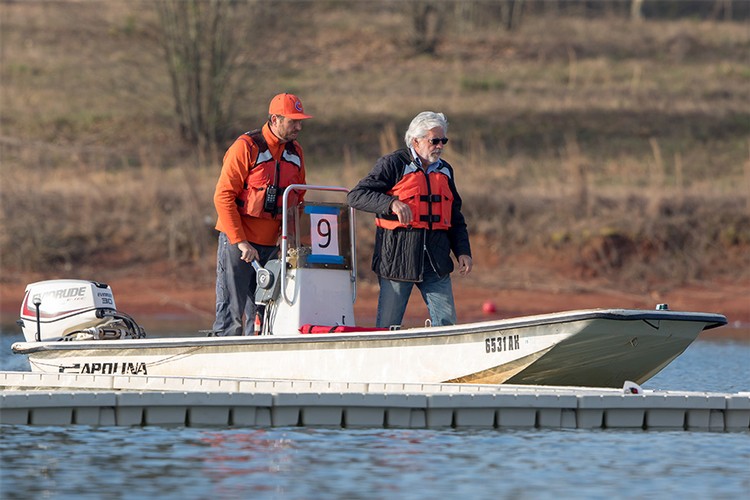
Following is another excerpt from Mike Davenport's posts designed to help rowing folks make the most of this downtime in the sport, as well as keep their programs on the water at any time; read the full article at Rowing Life Jackets: A Critical Coaching Tool.
The morning I should have drowned was a chilly Fall day.
It was wicked early. I was in my launch, checking buoys for a race.
By myself. Flat water. The launch wet with dew.
I grabbed for a misplaced buoy.
I reached. I slipped. I fell overboard.
Cold water. Full dressed. Pockets loaded with tools.
I didn’t drown that morning because of a decision I made years before.
Immediately after college I began work as a whitewater raft guide. I wore a PFD10 hours per day, or more. Over the years, I saw hundreds of rafters survive falling in raging rivers and were able to go home with a great story to share, thanks to their PFDs.
Because of those years guiding I made a decision to always wear my PFD when coaching. It saved my life that morning.
You make your decision to wear a life jacket or not, but you are required to have life jackets
I don’t share my story to talk or guilt you into wearing a PFD.
Depending on where you coach, regulations probably require you to have PFDs. Regulations vary; do some research and figure out what you must have.
Not just any life jacket will do
For example, I must carry life jackets in my launch—but there is also an EXACT type of life jacket I need to carry.
Requirements vary depending on what part of the world you live in; in the States, there are numerous types of jackets, ranging from Type 1 to Type V, each designed a bit differently, and each coming in different sizes.

You will also want to take care of your jackets both in and out of season; see Mike's original article for more tips and tricks. Other considerations include the number of life jackets you will actually be expected to have, how to store them safely and accessibly, making sure they fit your passengers (and potential passengers); read more in Mike's article here.
Let me float this by you...
There are two types of rowing coaches: those who HAVE fallen overboard and those who WILL fall overboard. When it happens (not IF it happens) the situation can quickly become life-threatening.
Give some serious consideration to having (and wearing) a rowing life jacket. Wearing mine saved my life that cold morning. It might just save yours.
To learn more about rigging and equipment care, check out Mike's new book Get Ready To Row: A Rowing Equipment Roadmap To Make Your Next Season Hassle Free - due out this summer, keep an eye at MaxRigging.com.
If you enjoy and rely on row2k, we need your help to be able to keep doing all this. Though row2k sometimes looks like a big, outside-funded operation, it mainly runs on enthusiasm and grit. Help us keep it coming, thank you! Learn more.
Comments | Log in to comment |
There are no Comments yet
| |
- Bont Rowing
- Calm Waters Rowing
- Concept 2
- Craftsbury Sculling
- The Crew Classic
- CrewLAB
- Croker
- Durham Boat Co.
- Empacher
- Faster Masters
- Filippi
- Fluidesign
- h2row.net
- HUDSON
- Live2Row Studios
- Nielsen-Kellerman
- Oak Ridge RA
- Peinert Boat Works
- Pocock Racing Shells
- Race1 USA
- RowKraft
- Rubini Jewelers
- Vespoli USA
- WinTech Racing
- Bont Rowing
- Calm Waters Rowing
- Concept 2
- Craftsbury Sculling
- The Crew Classic
- CrewLAB
- Croker
- Durham Boat Co.
- Empacher
- Faster Masters
- Filippi
- Fluidesign
- h2row.net
- HUDSON
- Live2Row Studios
- Nielsen-Kellerman
- Oak Ridge RA
- Peinert Boat Works
- Pocock Racing Shells
- Race1 USA
- RowKraft
- Rubini Jewelers
- Vespoli USA
- WinTech Racing

















